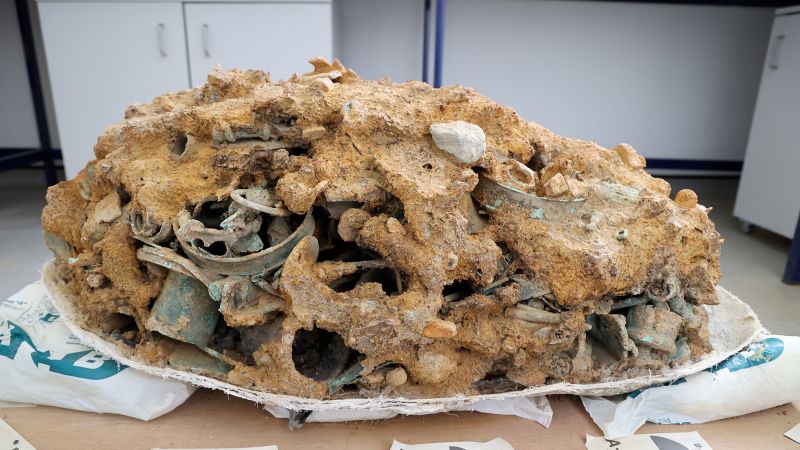In December 2021, a significant archaeological discovery was made in North Yorkshire, England, when metal detectorist Peter Heads unearthed a remarkable trove of Iron Age artifacts now labeled the Melsonby Hoard. This collection exceeds 800 items and has the potential to reshape our understanding of life in Britain two millennia ago. Researchers, including a team from Durham University, have highlighted the immense historical significance of this find, created during a period marked by the Roman conquest of southern Britain around the first century AD.
After the initial discovery, the site near the village of Melsonby was carefully excavated in 2022 with guidance from experts at the British Museum and financial support from Historic England. The meticulous excavation revealed what is described as a time capsule, offering invaluable insights into Iron Age society and culture in Britain. According to Tom Moore, a professor of archaeology specializing in the British and European Iron Age at Durham University, the excavation process made it evident to the team, including Peter Heads, that they had stumbled upon something extraordinarily significant. This realization came when they opened a larger area of the site, marking the start of an exciting journey into the past.
The items unearthed from the Melsonby Hoard appear to have been buried around the time of the Roman incursion, and they encompass a variety of unique metalworks. Among the discoveries were components of chariots, including 28 iron wheels, a cauldron believed to be used for mixing wine, ceremonial weapons, bridle bits, and elaborate horse harnesses designed for at least 14 ponies. This diverse array of artifacts reveals a level of craftsmanship and complexity previously unrecognized in Iron Age Britain.
Remarkably, some of the harness pieces are embellished with red coral and colored glass, indicating a blend of local craftsmanship and potential Mediterranean influences. This suggests that trade networks stretched far beyond the British Isles, connecting with continental Europe. Modern technology played a crucial role in the excavation process; advanced X-ray CT scanning from the University of Southampton was utilized to precisely identify the positions of the artifacts, allowing for a careful and damage-free extraction.
The implications of the Melsonby Hoard are profound. Experts from Historic England propose that the items found may not only serve as local artifacts but also demonstrate long-distance connections in terms of shared technology and cultural practices during the Iron Age. The research conducted by Durham University staff anticipates a possible re-evaluation of historical narratives surrounding this era, especially concerning societal hierarchies and the utilization of vehicles as status symbols.
The condition of the hoard suggests that many of the objects were either burnt or broken before being interred, hinting at the existence of a symbolic process to showcase power and wealth. While no human remains were discovered alongside the hoard, it is believed that the destruction of high-status objects might have taken place during funerary rites.
Moore emphasizes that the original owner of this material was likely a member of an elite network that extended not only throughout Britain but also into Europe and the Roman Empire. The scale of destruction exhibited in this hoard is rare in studies of Iron Age Britain, challenging previous assumptions about the power dynamics within northern Britain compared to the more documented southern regions. In fact, Sophia Adams, a curator at the British Museum, noted that this hoard represents the largest single deposit of horse harness and vehicle components found in the country.
In conclusion, the Melsonby Hoard stands not just as a testament to the craftsmanship and social practices of 2,000 years ago but also as a pivotal discovery that may transform our comprehension of Iron Age Britain and its connections to broader European contexts. The ongoing research will likely reveal even more about the complex societies that existed during this significant period in history.












